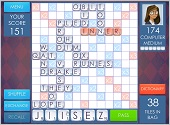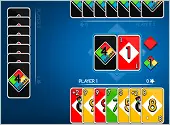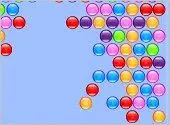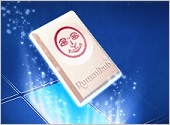- Home
- Better Memory
- Perfect Memory
Get a Perfect Memory, the Tibetan Way
A perfect memory, sometimes called a "photographic" memory, is vanishingly rare. There are only a handful of cases in the scientific literature.
But in his best-seller The Third Eye, lama T. Lobsang Rampa describes a memory technique used by the monks of Tibet that supposedly gives them total recall of anything they have studied. And it's got me curious.
Western medicine has documented a few cases of naturally perfect memory. For example, Kim Peek (a.k.a. the "Rainman") was a real person who seemed to not forget anything.
He memorized entire telephone directories and was able to read both the left and right pages of a book at the same time with perfect recall.
Then there was the famous case of a Russian newspaper reporter named Shereshevsky from the early 1900's. He never took notes, because everything he saw or did was automatically recorded in his memory perfectly as images. He could recall the tiniest detail months, even years, later.
But Lobsang Rampa's story is different. He claimed that Tibetan monks, especially those trained for higher roles, learned a mental filing cabinet or "Room of Drawers" method that allowed them to remember entire books of information.
Memorize Like a Monk
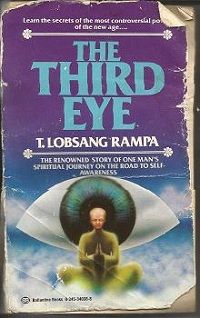
Rampa's method is not the mental filing cabinet described by Dr. Kenneth Higbee, which uses the proven memory systems that originated in ancient Greece and Rome and which were popularized by Harry Lorayne and others.
Although his Tibetan method does involve visualization (like the memory systems), Rampa's is also different because, as far as I know, it has never been proven to work!
I've tried it myself without success. If anyone has mastered his technique, I'd love to hear about it.
Below is an excerpt from The Third Eye (Ballantine Books, October 1964 edition, p. 82) where Rampa describes the Tibetan Room of Drawers perfect memory technique.
I can't say it will work for you, but give it a try if you want. And let me know how it goes.
One of the things for which I am still grateful is the way in which we were taught to memorize. Most Tibetans have good memories, but we who were training to be medical monks had to know the names and exact descriptions of a very large number of herbs, as well as knowing how they could be combined and used. We had to know much about astrology, and be able to recite the whole of our sacred books.
A method of memory training had been evolved throughout the centuries. We imagined that we were in a room lined with thousands and thousands of drawers. Each drawer was clearly labelled, and the writing on all the labels could be read with eases from where we stood.
Every fact we were told had to be classified, and we were instructed to imagine that we opened the appropriate drawer and put the fact inside. We had to visualize it very clearly as we did it, visualize the "fact" and the exact location of the "drawer".
With little practice it was amazingly easy to - in imagination - enter the room, open the correct drawer, and extract the fact required as well as all related facts.
Our teachers went to great pains to ram home the need for good memories. They would shoot questions at us merely to test our memories.
The questions would be quite unrelated to each other so that we could not follow a trend and take an easy path. Often it would be questions on obscure pages of the sacred books interspersed with queries about herbs. The punishment for forgetfulness was most severe; forgetting was the unforgivable crime and was punished with a severe beating.
We were not given a long time in which to try to remember. The teacher would perhaps say: "You, boy, I want to know the fifth line of the eighteenth page of the seventh volume of the Kan-gyur, open the drawer, now, what is it?" Unless one could answer within about ten seconds it was as well not to answer, because the punishment would be even worse if there was any mistake, no matter how slight.
It is a good system, though, and does train the memory. We could not carry books of facts. Our books were usually about three feet wide by about eighteen inches long, loose sheets of paper held unbound between wooden covers. Certainly I found a good memory to be of the utmost value in later years.
Before you get excited about the Tibetan perfect memory technique, you should know that controversy swirls around Lobsang Rampa. It's true his books are best sellers worldwide, and they are fascinating to read. But many people claim they are pure fiction.
I really wish there were a technique for achieving a "perfect" memory. The memory systems based on visualization come pretty close: the Keyword method, Link method, Peg method, Face-Name method, Loci method, and Phonetic Number method.
So if the Tibetan Room of Drawers doesn't give you a perfect memory, try the Memory Systems instead. They are powerful memory techniques that certainly do work.
Published: 07/31/2013
Last Updated: 06/11/2020
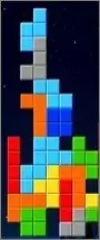
Newest / Popular
Multiplayer
Board Games
Card & Tile
Concentration
Math / Memory
Puzzles A-M
Puzzles N-Z
Time Mgmt
Word Games
- Retro Flash -
Also:
Bubble Pop
• Solitaire
• Tetris
Checkers
• Mahjong Tiles
•Typing
No sign-up or log-in needed. Just go to a game page and start playing! ![]()
Free Printable Puzzles:
Sudoku • Crosswords • Word Search

Hippocampus? Encoding? Spaced repetition?
Look up memory or brain terms in the A-Z glossary of definitions.




